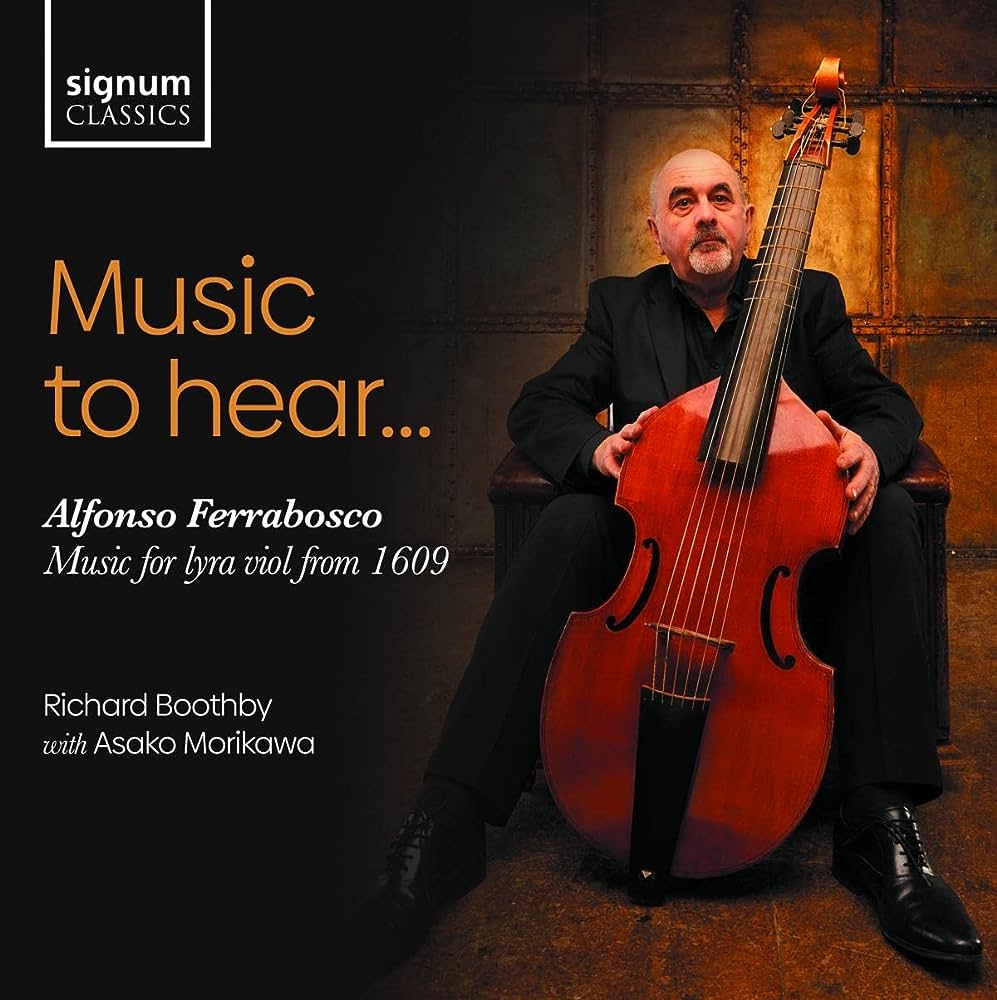MUSIC TO HEAR… – ALFONSO FERRABOSCO
Elegant Harmonies
Don Roberts, December 2023
In their latest release, “Music to Hear …,” violists Richard Boothby and Asako Morikawa offer a captivating exploration of Alfonso Ferrabosco’s lesser-known compositions. This collection showcases 23 pieces from Ferrabosco’s 1609 publication “Lessons for 1, 2 & 3e Viols,” shedding light on the musical talents of a historically significant composer and performer. Boothby’s past accomplishments, especially within the realm of English music for the viol, underscore his authority as an interpreter of Ferrabosco’s work.
Alfonso Ferrabosco II, the illegitimate son of Alfonso Ferrabosco the elder, was a prominent musician in England during the early 17th century. His role as a court musician under Queen Elizabeth and later King James VI of Scotland granted him the opportunity to collaborate with renowned artists like Ben Jonson and Inigo Jones on court masques and other musical endeavors. This disc showcases a selection of his compositions for the lyra-viol, an instrument with six strings that allowed for intricate chords and arpeggiated textures, reminiscent of the lute.
Boothby and Morikawa’s performances exhibit a deep understanding of the intricacies of Ferrabosco’s music. The duo’s interpretations beautifully capture the essence of these compositions, revealing the composer’s thought processes and emotional nuances. The preludes on this recording exude a sense of improvisational exploration, akin to Frescobaldi’s keyboard toccatas. Boothby’s playing showcases an uncanny intimacy with the music, bringing out the subtleties that make Ferrabosco’s work so engaging.
The diverse range of dance forms featured on the album, such as the almaines and corantos, highlights Ferrabosco’s compositional skill and inventiveness. Boothby’s meticulous attention to detail distinguishes the different dance types, delivering performances that are both lively and expressive. The corantos, for instance, demonstrate a lighter texture and a more straightforward rhythm compared to the almaines, showcasing Boothby’s aptitude for highlighting the intricacies of each dance.
Ferrabosco’s music also conveys melancholic moments and flashes of joy, both of which Boothby captures with his expressive playing. The deep understanding between the violists and Ferrabosco’s compositions results in performances that transcend mere technical execution, breathing life into each piece. It’s as if Boothby and Morikawa are engaged in a musical conversation with Ferrabosco across the centuries.
The historical significance of Ferrabosco’s contributions to English music, along with Boothby and Morikawa’s masterful interpretations, underscores the value of this recording. “Music to Hear …” invites listeners to explore the subtleties and complexities of Ferrabosco’s work and offers a rewarding listening experience for lovers of both early music and the viol. Boothby’s ability to bring out the emotions embedded in Ferrabosco’s compositions turns this disc into a valuable addition to any collection, making the case for the enduring relevance of this lesser-known composer.

